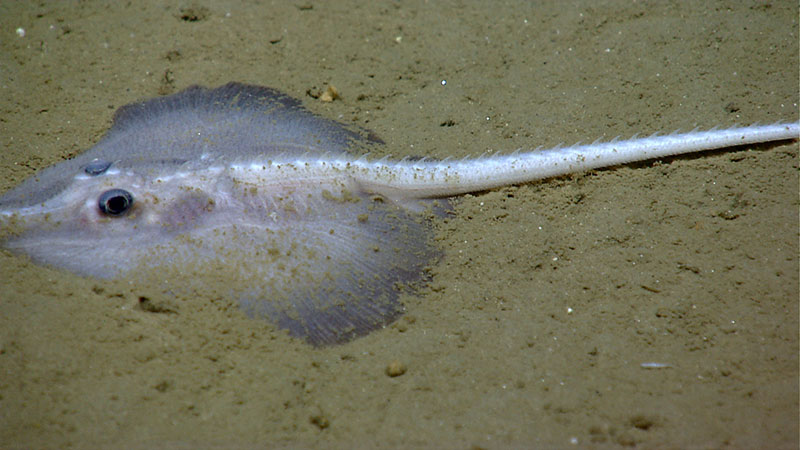-

A rarely observed deepwater skate is imaged on the seafloor of Veatch Canyon during a dive on July 20, 2013. Image courtesy of the NOAA Office of Ocean Exploration and Research, Northeast U.S. Canyons Expedition 2013. Download larger version (jpg, 1.3 MB).
-
Dive 12 investigated the transition from canyon processes to landslide deposition within Veatch Canyon to explore the relative timing of past landslide events. The remotely operated vehicle Deep Discoverer descended onto a soft sediment bottom with some bioturbation (the reworking/restructuring of sediments by moving organisms) including feeding traces, hummocks, and burrows at a depth of 2,108 meters. Video courtesy of the NOAA Office of Ocean Exploration and Research, Northeast U.S. Canyons Expedition 2013. Download video (mp4, 26.3 MB).
-
A lithodid king crab seen in Veatch Canyon. Video courtesy of the NOAA Office of Ocean Exploration and Research, Northeast U.S. Canyons Expedition 2013.. Download video (mp4, 4.2 MB).